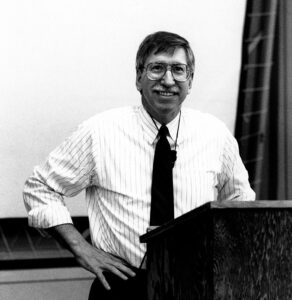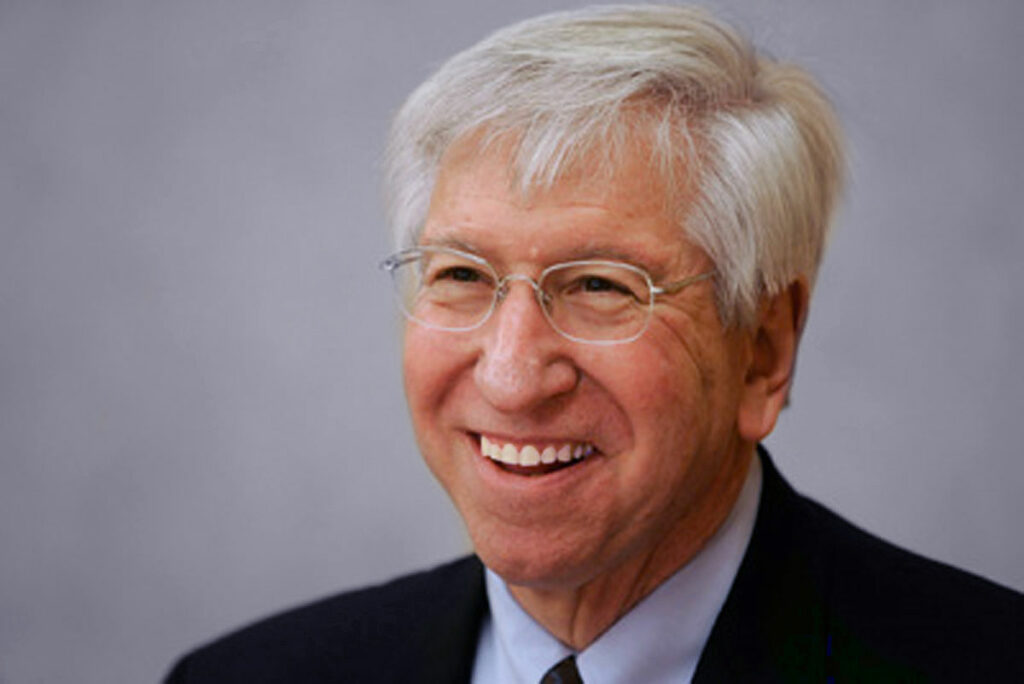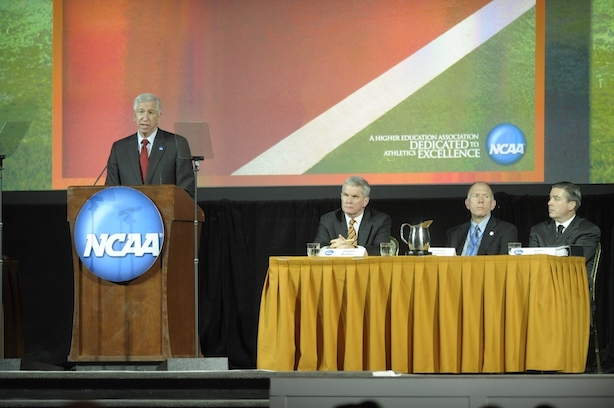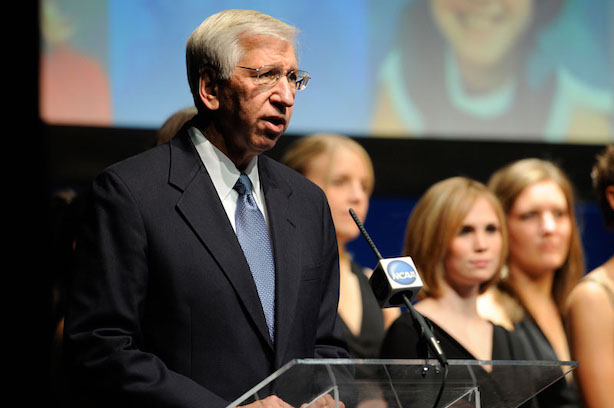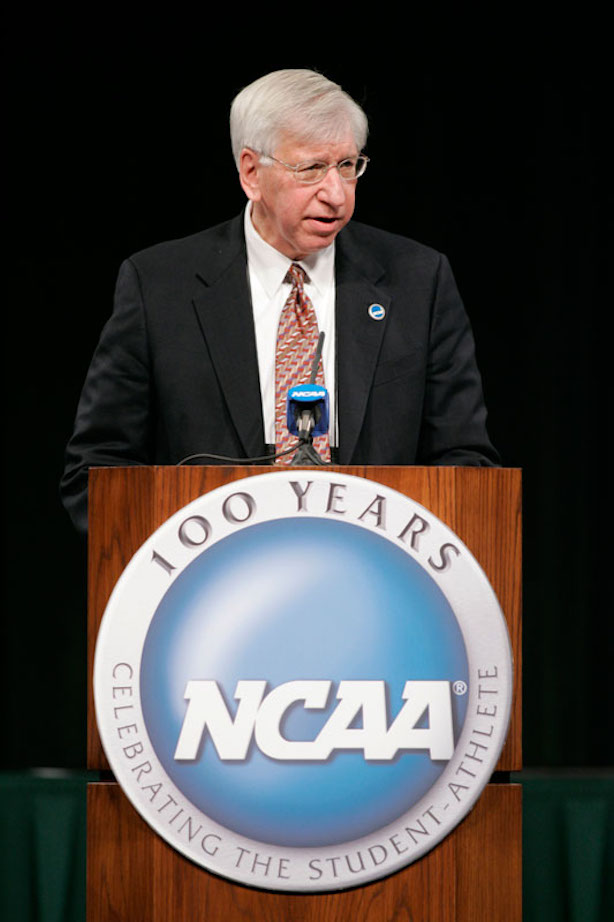Graduation Success Rate Goal Reached
Nearly six years after the NCAA introduced the Academic Progress Rate, Brand was proud to announce the success of their academic reform initiative. The graduation rates of student-athletes were steadily increasing, and the Graduation Success Rate passed their initial goal of 80% graduation in 2009. That number has only continued
Final NCAA State of the Association Address
Because of his health, Brand was unable to deliver his final State of the Association Address in person. Instead, a shortened version of the speech was publicly delivered by Vice President Wallace Renfro at the annual convention. Brand’s original written speech is included here in full, examining the necessity for
2008 NCAA State of the Association Address
Brand’s speech at the 2008 NCAA Convention reflected on the role of the NCAA and intercollegiate athletics as a whole. He passionately spoke about the value of sports to create community, promote social justice, and augment the classroom experience. As a former university president himself, Brand emphasized that universities and
AGB Formulates Oversight Guidelines
Brand worked with the Association of Governing Boards (AGB) and other organizations to delineate a set of guidelines for universities and their governing boards, outlining their responsibilities to intercollegiate athletics. The guidelines aimed to encourage proactive oversight that would prevent scandal, protect student-athletes, and better align college sports with the
2007 NCAA State of the Association Address
In light of his continuing advocacy efforts, Brand titled his State of the Association Address during the 2007 NCAA Convention: “In All, Fairness.” He recalled the NCAA’s underlying values of sportsmanship and fairness as a critical lens to examine the issues of the day—from the academic reform initiative, to the
Diversity Leadership Strategic Planning Committee Formed
As part of his continued mission for equity, Brand created a panel of forty athletic administrators who would serve as the Diversity Leadership Strategic Planning Committee. The committee was tasked with charting a roadmap of recommendations for the NCAA to achieve a lasting culture of diversity and inclusion.
NCAA Centennial Celebration
In 2006, the NCAA celebrated their 100-Year Anniversary, honoring the first century of united leadership in collegiate sports. In his NCAA State of the Association Address that year, Brand wrote a speech examining the bedrock principles that shaped the organization’s past—and how those values would remain their mission and foundation
Created the Office for Diversity and Inclusion
In 2005, Brand created the NCAA’s Office for Diversity and Inclusion to actively support and advocate for equity in intercollegiate athletics. He hired African American scholar Charlotte Westerhaus to serve as the Vice President of Diversity and Inclusion and worked with her to develop strategies, policies, and programs to address
